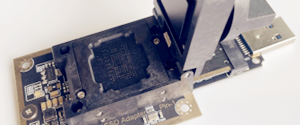Bios General Knowledge
The BIOS and operating system play an important role in how your hard disk is used. While the BIOS itself has taken more of a “back seat” role to direct access by the operating system over the last few years, it is still there “in the mix” in several ways. This section takes a brief look at the impact of the BIOS on hard disk setup and access.
The system BIOS is the lowest-level interface between the hardware of your system and the software that runs on it. It has several significant roles that it plays in the control of access to hard disks:
* BIOS Interrupt Routines: In order to ensure the interoperability of various hardware and software products, the BIOS of the system is tailored to the needs of its hardware, and provides a standard way of letting software addressing the hardware. These are called BIOS services and are used by many operating system and application programs. They provide a uniform interface to the hard disk, so applications don’t need to know how to talk to each type of hard disk individually. (Many newer operating systems today regularly bypass these BIOS services but still may use them for compatibility purposes.)
* Hard Disk Detection and Configuration: Standard IDE/ATA hard disks are configured in the BIOS using various BIOS settings. Modern BIOSes can in fact interrogate modern IDE/ATA disks to determine these parameters, and automatically configure them.
* Hard Disk Interface Mode Support: The BIOS, working with the system chipset on the motherboard and the system I/O bus, controls which types of interface modes can be used with the hard disk. This refers specifically to features such as high-performance PIO modes, DMA modes, and block mode.
One of the most important techniques used to break the 504 MiB disk size barrier that results from the combination of BIOS and IDE/ATA hard disk restrictions is the use of BIOS translation. This can be a rather confusing subject and so this section discusses in detail the various types of BIOS translation that are used in PCs. A BIOS that supports the extended CHS and/or LBA modes is often said to be an enhanced BIOS.
Note: For completeness, and to assist those working with older hardware, I maintain the descriptions of translation modes in some detail here. Realize however that on most modern systems they are no longer of much relevance. Drives over 8.4 GB in size, which is what modern PCs use, are generally accessed by setting the BIOS to dynamically autodetect their size at boot time, and then using logical block addressing. Most of the issues that PC users once had to deal with in terms of tweaking BIOS translation modes are no longer necessary for modern drives over 8.4 GB in size, because these drives are no longer address using cylinder, head and sector numbers.
As hard disk capacity has reached and then exceeded the various hard disk size barriers, various methods have come about to allow these larger disks to be used. These solutions include various hardware and software techniques, primarily aimed at getting around limitations imposed by the system BIOS. This section looks at these in detail.
It’s important to realize that some of these solutions are simpler and more elegant than others; some are based on fixing the BIOS problem, while others are oriented more towards working around it. The simpler the solution, in general, the better. More complex solutions, especially ones involving software drivers, tend to have a higher incidence of incompatibilities and other issues.
Note: One solution to overcoming BIOS size barriers that I don’t discuss in detail here is to upgrade an older motherboard to a new one. Needless to say, this is not a cheap or simple solution, and not one that I would generally recommend solely to get around a size barrier problem.
The most commonly used and important method of getting around the key 504 MiB barrier is through the use of an enhanced BIOS that supports BIOS translation. This translation allows the BIOS to break the 504 MiB barrier by translating between disk parameters that the disk understands, and a different set that the BIOS understands. The main problem with BIOS translation is that very old BIOSes don’t support it. In some cases, a BIOS upgrade can enable an older system to employ BIOS translation, and a system that supports flash BIOS upgrades can be updated to this support without even opening up the system case. The manufacturer of the system or motherboard is the place to start when considering a BIOS upgrade.
Similarly, since many of the later size barriers are due to limitations in BIOS code, they can similarly be overcome by upgrading the BIOS with new code that can handle larger drives. A new BIOS today will enable Int13h extensions to get around the 8 GB size barrier, for example. It will also address other BIOS code problems such as the one that causes the so-called 32 GB size barrier.
A BIOS upgrade from the system or motherboard manufacturer is generally the best solution to a hard disk size barrier problem, for two reasons. First, it is generally free, if the upgrade has been provided by the original hardware maker. Second, it is the simplest and most direct solution to the problem: you are replacing broken code with fixed code, and once that is done your hard drives will work properly without any other work being required. These two attributes make this solution far superior to the others I discuss in this section, and I strongly advise that you look for a BIOS upgrade before you consider the others.
Unfortunately, some BIOSes cannot be easily upgraded. This is usually because the manufacturer has obsoleted the motherboard and has decided to no longer support it. (This is understandable for very old machines, but occasionally manufacturers give up on hardware as little as two years old, which I consider unacceptable–avoid such hardware.) In some cases where this has happened, you may be able to purchase a third-party BIOS upgrade. This is BIOS code that has been written by a company other than the one that initially made your system or motherboard. This is a viable option, and retains the advantage of being an elegant solution, but not the one about the upgrade being free! In some cases these upgrades are $75 or more, and frankly, if all you want is updated hard disk size support it’s often not worth the money compared to other solutions. If you want other features that can come with a BIOS upgrade then it may be worthwhile.
Data recovery Salon welcomes your comments and share with us your ideas, suggestions and experience. Data recovery salon is dedicated in sharing the most useful data recovery information with our users and only if you are good at data recovery or related knowledge, please kindly drop us an email and we will publish your article here. We need to make data recovery Salon to be the most professional and free data recovery E-book online.
World’s Top Data Recovery Hardware Tools
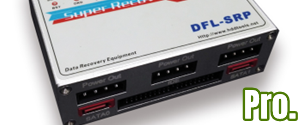
Easy to use at good price
Recover SATA, IDE, External HDDs, NVME SSDs, etc Order Now here
POTABLE DEVICE & NVME SSD RECOVERY TOOL
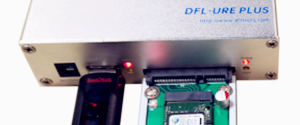
Recover USB Device and NVME SSDs at high speed! Read Details here.
DFL-PCIE DATA RECOVERY RECHARGE
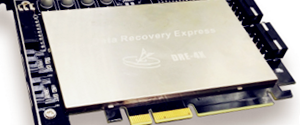
Best data recovery hardware tool to start a data recovery business, read details here
RECOVER SCRATCHED HDDS

Recover lost data from scratched hard drives, read details here.
SURFACE PRO. RECOVERY
BEST HEAD REPLACEMENT TOOLS
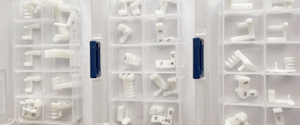
The most cost-effective head replacement tools for Seagate, WD, Samsung, Hitachi, Toshiba, Fujitsu

